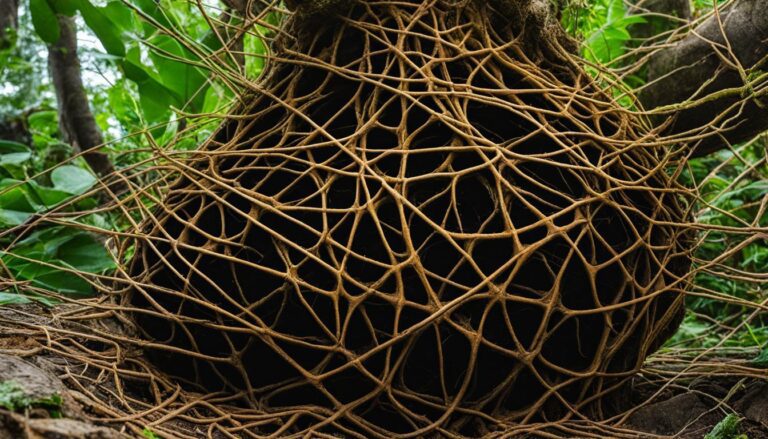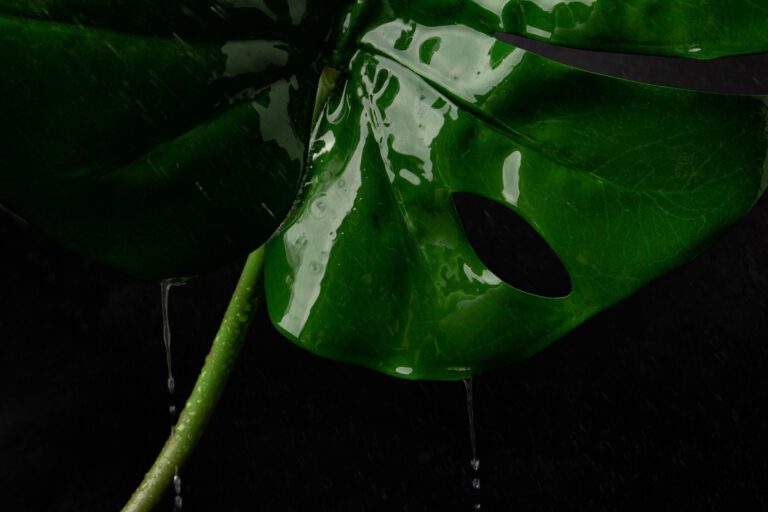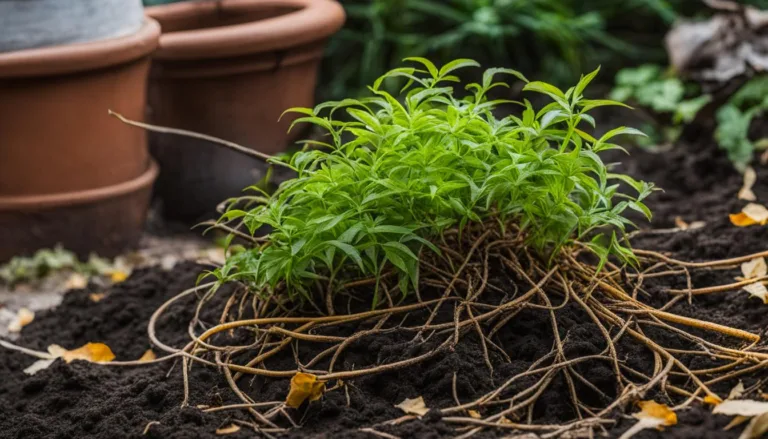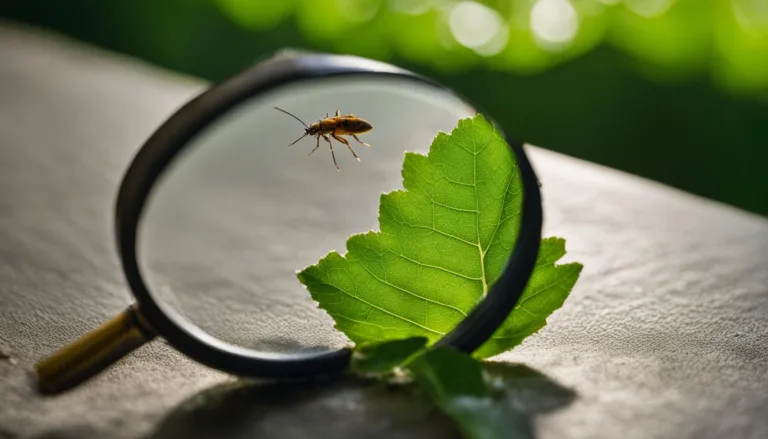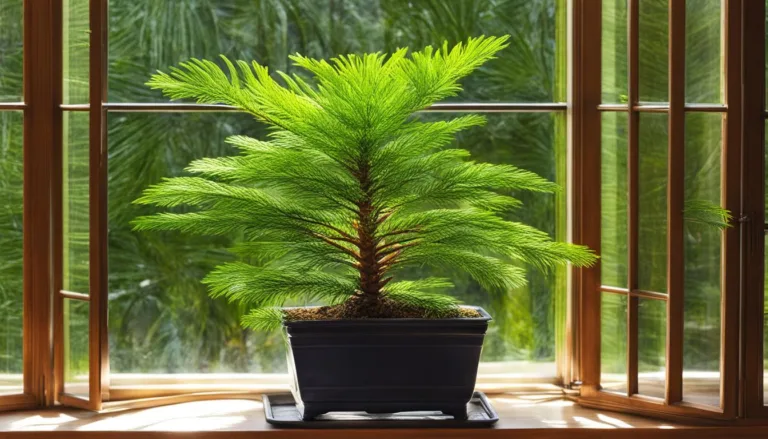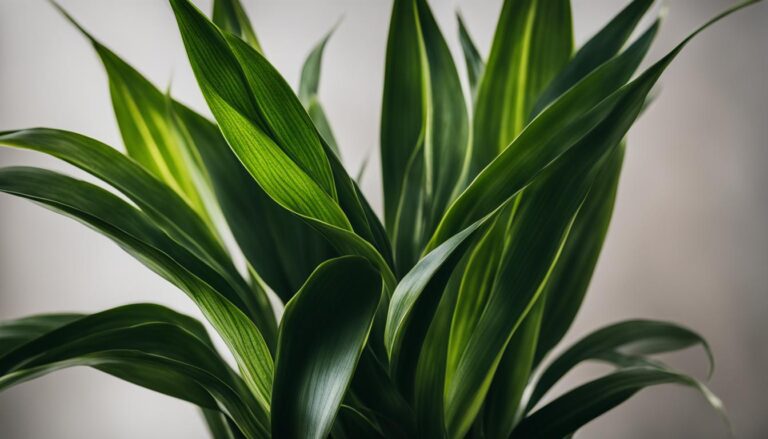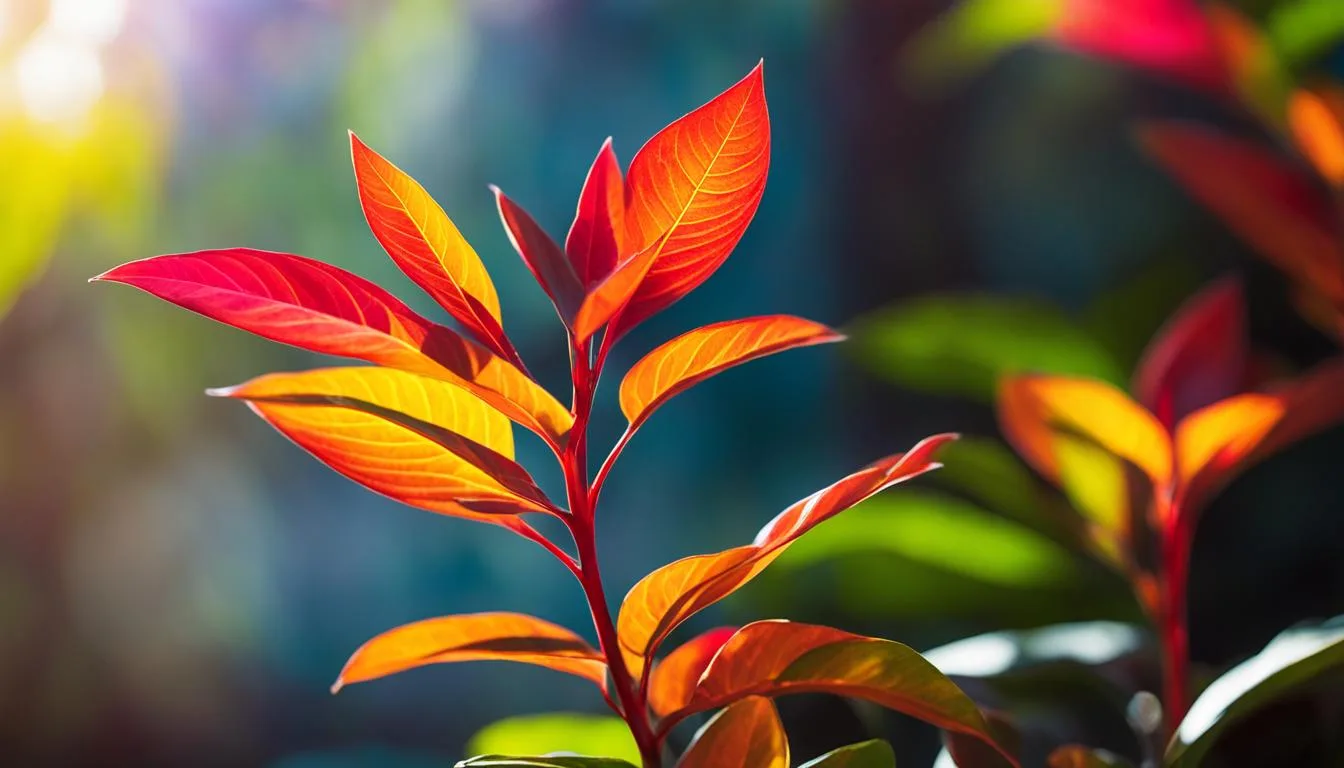
This is the ultimate guide on Croton Petra care, where I share my personal insights and best practices to keep your vibrant foliage looking its best. Caring for Croton Petra plants is not just a gardening task; it’s an art form that brightens up any living space with a burst of color.
From my own experience, I can tell you that few houseplants can compete with the dynamic color stories told by the leaves of a Croton Petra. With splashes of red, orange, yellow, and green, it’s a living masterpiece in your own home.
Good Croton Petra plant care requires understanding this tropical charmer’s needs. This guide is crafted to lead you through the necessary steps to cultivate a healthy, flourishing Croton Petra.
Whether you’re a seasoned plant enthusiast or new to the world of vibrant houseplants, caring for Croton Petra can be a rewarding experience that spruces up your space with the ambiance of a tropical jungle.
Key Takeaways
- Providing bright, indirect light is essential for Croton Petra care.
- Maintain vibrant foliage by mimicking the plant’s natural, humid habitat.
- Understanding the balance of watering needs will keep the plants thriving.
- Frequent monitoring for pests ensures the longevity of your Croton Petra.
- Pruning and repotting are vital for maintaining plant health and aesthetics.
- Familiarize yourself with the plant’s toxicity to pets and humans for safe care.
- Complementing Croton Petra with suitable companion plants can enhance its beauty.
Introducing the Colorful World of Croton Petra
As someone who’s endlessly fascinated by the joys of indoor gardening, the colorful Croton Petra makes for a remarkable addition to plant collections. It brings a rich spectrum of reds, yellows, oranges, and greens, transforming any corner of your home into a vibrant display.
Croton plant care is an engaging experience that has, over the years, deepened my appreciation for these vibrant houseplants. Native to the humid and warm climates of Southeast Asia, Southern India, and Australia, the Croton ‘Petra’ requires a particular environment to sustain its bright, variegated foliage.
Enthusiasts of brightly-hued flora often find the Croton Petra’s vivacity captivating. This stunning plant is known for its medium maintenance temperament and enjoys a humid, warm environment that mimics its tropical origins.
Let’s dive into the specifics of maintaining the healthcare that reflects the Croton Petra’s natural habitat, ensuring its thriving status as a joyful, colorful Croton Petra in your living space.
| Care Aspect | Natural Habitat Conditions | Indoor Care Equivalent |
|---|---|---|
| Lighting | Bright, indirect sunlight of the tropics. | Place near eastern, southern, or western windows for similar light quality. |
| Humidity | High humidity in tropical climates. | Use of humidifiers, spritzing, or pebble trays to maintain adequate moisture levels. |
| Temperature | Consistently warm temperatures without drastic fluctuations. | Keep indoor temps between 60°F-80°F, away from drafts and cold windows. |
I’ve discovered that once you’ve dialed into the sweet spot of its care, the Croton Petra rewards with year-round beauty. Indeed, its care is simple once understood and embraced, but it demands consistency — like any good habit.
By ensuring your home mimics the Croton Petra’s lush, natural environment as closely as possible, you set the stage for a thriving and colorful Croton Petra, the jewel of any plant-lover’s collection.
- Bright, indirect sunlight keeps those leaves dazzlingly variegated.
- Humidity akin to its tropical origins will ensure it doesn’t shy away from showing its true colors.
- Warmth will keep its growth steady and prevent the leaf loss often associated with colder environments.
I invite you to continue this vibrant adventure, as we delve deeper into the specific needs of this extraordinary houseplant, ensuring its radiant presence in our homes for years to come.
Optimal Lighting Conditions for Croton Petra Growth
As a foliage fanatic, I’ve found that the spectacular plant coloration of a Croton Petra is a sight to behold. This plant demands specific Croton Petra light requirements to maintain its stunning appearance.
Achieving the brightest leaf hues relies heavily on striking the right balance with light exposure. Let’s explore how to ensure your Croton Petra receives the light it needs to flourish and display its full color palette.
Maximizing Light Exposure for Enhanced Coloration
I always remind fellow plant enthusiasts that the radiant coloration of Croton Petra is best maintained with 4-6 hours of moderate to bright indirect sunlight daily. This regime is the key to unlocking the intense, picturesque hues for which these plants are celebrated.
To replicate these conditions indoors, I frequently advise placing your Croton Petra in a location where it can bask in ample bright indirect sunlight, away from the risk of harsh, direct light that can tarnish its vibrant leaves.
Navigating Direct Sunlight and Indirect Light for Your Croton
Ensuring your light-sensitive houseplant thrives without succumbing to the perils of direct sunlight is like mastering an art. My Croton Petra has shown me that while they adore light, their leaves can be quite delicate. Here’s a breakdown of how I successfully use light for my Croton Petra:
| Location | Light Exposure | Coloration Effect |
|---|---|---|
| Indoor East/West Window | Bright indirect light | Enhanced multi-tone variegation |
| Shaded Patio (Zones 10b-12) | Protection from afternoon sun | No leaf burn, consistent vibrancy |
| Interior Room | Moderate indirect light | Milder variegation but healthy growth |
My advice is to keep a close eye on your Croton Petra’s exposure to sunlight. Rotate the plant occasionally to ensure each side gets an equal taste of those invigorating rays.
Witnessing how the light transforms your plant from merely green to a carnival of colors is one of the most rewarding experiences a plant lover can have. Remember, consistency in providing the proper lighting is as vital as the light itself for maintaining the Croton Petra’s spectacular visual display.
Watering Your Croton Petra: Frequency and Techniques
Many plant parents ask me about the Croton Petra watering guide, and I’m always eager to share the proven strategies I’ve honed over time.
The key to successfully hydrating this flamboyant foliage lies in both watering frequency and employing correct watering techniques to ensure optimal moisture levels without the risk of waterlogging.
Through careful observation and routine checks, I’ve realized that the Croton Petra communicates its thirst quite clearly. When the top 1-2 inches of soil feel dry to the touch, it is the right moment to water.
Consistency in the soil’s moisture is paramount; it’s what supports the luminous leaves in all their eye-catching, watercolor array.
I stand by the use of lukewarm, filtered, or bottled water, as Croton Petra can be sensitive to the chemicals found in tap water.
Rises in temperature during summer months naturally increase the plant’s hydration needs, whereas, in winter, a slight reduction in watering frequency aligns with the plant’s slower growth rate.
Perfecting the Watering Process
To avoid the pitfalls of overwatering, which is a common mistake, I suggest employing a ‘soak and dry’ technique. Here’s a step-by-step outline of how I ensure my Croton Petras are perfectly watered:
- Check the soil’s top 1-2 inches for dryness, an easy indicator that watering is needed.
- Gently water around the base of the plant, ensuring that the soil is hydrated evenly.
- Allow excess water to drain away completely, ensuring roots are not left to sit in water.
Here’s a table summarizing the watering needs and the corresponding actions to take:
| Season | Watering Frequency | Technique | Moisture Check |
|---|---|---|---|
| Spring/Summer | Regular | Soak and dry | 1-2 inches soil dryness |
| Fall/Winter | Reduced | Gentle watering | Topsoil slightly more dry |
| All Year | As needed | Lukewarm, filtered water | Consistent moisture |
Implementing a systematic watering technique void of guesswork protects this tropical resident from common missteps in care. It echoes the rhythm of the Croton Petra’s natural habitat, where regular, balmy showers are the norm.
My success with these radiant plants illuminates how pivotal the right watering practices are to the vitality and longevity of your Croton Petra.
Mastering Humidity Levels for Croton Petra Flourishing
As I nurture my Croton Petra plants, replicating the lush and moist environment of their natural habitat is fundamental. Cultivating a mini tropical atmosphere within my home has become a satisfying ritual that mirrors the Croton Petra’s original growing conditions.
This deep sense of tropical affinity not only benefits the plants but also brings me an inexplicable joy, as if I have carved out a little slice of the tropics right here in my urban dwelling.
Creating a Mini Tropical Atmosphere at Home
Creating a tropical atmosphere for optimal humidity levels and Croton Petra indoor care can be achieved through a few simple methods. Introducing humidity is an integral part of caring for these vibrant plants, and I’ve found a few techniques that work wonderfully in keeping my Croton Petra thriving:
- An electric humidifier to disperse moisture into the air, mimicking the plant’s tropical terrain.
- Regular misting of the leaves, which my plants seem to love, particularly during the drier seasons.
- Placing a water-filled pebble tray beneath the pot, which increases humidity around the plant as the water evaporates.
These methods coalesce to create a nurturing, tropical atmosphere for Croton Petra, enhancing the vibrancy of its foliage.
Signs of Humidity Discontent in Your Croton Petra
It is important to note when the humidity levels may not be adequate for your Croton Petra, as the signs are typically visible and actionable, thus preventing further discontent. For instance:
| Sign | Observation | Action |
|---|---|---|
| Leaf droopiness | Leaves appear limp and less vibrant | Increase the frequency of misting or consider adding a humidifier |
| Leaf discoloration | Leaves develop brown tips or edges | Ensure that humidity levels are consistent; use a humidifier if necessary |
| Stunted growth | New growth is slow or abnormal | Check the ambient humidity with a hygrometer and adjust as needed |
| Wilting | General wilt despite correct watering | Assess the environment for dry air sources and mitigate with increased humidity |
By prioritizing the mimicking of a tropical atmosphere, and being vigilant for signs of humidity distress, my Croton Petras are able to grow and express their luscious beauty fully, reinforcing the maxim that proper humidity levels are fundamental to the care and joy these remarkable plants bring into our homes and lives.
Croton Petra Temperature Preferences: Keeping Your Plant Cozy
Understanding the Croton Petra temperature preferences is essential for anyone looking to maintain a lush and healthy indoor garden. I’ve witnessed firsthand that these tropical beauties thrive in warm environments, and this remains a non-negotiable aspect of their care regime.
So let’s get into the nitty-gritty of creating the perfect cozy spot for your Croton Petra, ensuring its growth is not hampered by any unwelcome cold.
Maintaining Ideal Temperatures During Seasonal Changes
Being naturally predisposed to tropical climes, Croton Petra plants crave the steadiness of warm temperatures. The ideal temperature range lies between 60°F and 80°F.
During the seasonal temperature changes typical in many parts of the United States, it’s imperative to protect your cherished Croton Petra from the chill that accompanies autumn and winter months.
It’s not just about the cold outdoors; indoor cold drafts can be just as damaging. Ensure your plant is positioned away from drafty areas, such as those near air conditioning units in the summer or leaky windows during the colder months. Here’s how I’ve managed to maintain a stable, warm environment for my Croton Petras:
- Relocating the plants away from windows that might leak cold drafts as the seasons change.
- Avoiding placement near exterior doors that are frequently opened and closed during the winter.
- Ensuring consistent home temperatures with the help of programmable thermostats.
Below is a handy reference table that I use to keep track of ideal Croton Petra care through the seasons:
| Season | Recommended Temperature | Placement Tips |
|---|---|---|
| Spring/Summer | 65°F-80°F | Position away from direct A/C airflow |
| Fall/Winter | 60°F-75°F | Keep in a consistently warm room away from drafts |
| General Tip | Keep steady | Avoid drastic temperature fluctuations |
My success with these vibrant Croton Petra plants can be attributed to respecting their need for warmth, effectively mimicking their preferred tropical conditions.
Monitoring your plant’s environment for sudden drops in temperature is crucial. A happy, warm Croton Petra will reward you with lush foliage and a splash of color that brightens any space.
Nourishing Your Croton Petra: Fertilization Best Practices
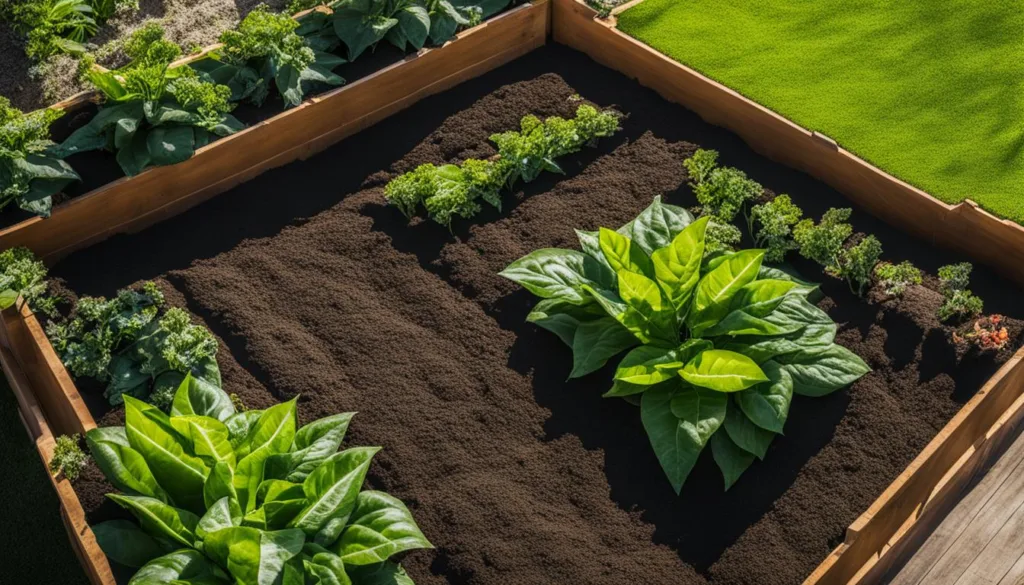
As a dedicated plant parent, my Croton Petra plants are like my vibrant, leafy children, and nourishing them correctly is paramount to their growth and beauty. Fertilizing these colorful tropical wonders ensures they stay as eye-catching as the day I brought them into my home.
There’s an art to Croton Petra fertilization that revolves around timing, product choice, and observing the seasonal changes that influence the plant’s needs.
Utilizing organic fertilizer guarantees that my plants receive all the essential nutrients without any harmful chemicals that could affect their growth or my indoor air quality.
I make it my mission to provide my Croton Petra with the optimal balance of nourishment, structuring a plant food schedule that perfectly aligns with their natural cycles of growth and rest.
Here’s a closer look at the fertilization technique that keeps my houseplants, especially my Croton Petra, in peak condition.
- Spring and Summer: This is the time when the Croton Petra is in its active growing period. I mark my calendar to fertilize once per month with an organic fertilizer that’s rich in all the nutrients it craves for blossoming into their fullest potential.
- Fall and Winter: As the cooler months approach, my Croton Petra enters a phase of rest. It’s during this period that I pause all fertilization, understanding that rest is as vital for the plants as it is for us humans.
My experience has taught me that a disciplined approach to nourishing houseplants sustains not just their health but their visual delight, too. Now, let’s break down the details into a straightforward fertilization schedule:
| Season | Fertilization Frequency | Type of Fertilizer | Method |
|---|---|---|---|
| Spring/Summer | Monthly | Organic, balanced N-P-K | Dilute as instructed and apply to moist soil |
| Fall/Winter | None | N/A | Allow plant to rest |
By following these fertilization best practices, I take comfort in knowing that I’m doing my part in keeping my Croton Petra not just alive, but thriving, rewarding me with their splendorous display of colors that feels like a never-ending tropical summer in my own home.
The Art of Pruning and Propagation for Croton Petra
One of the most rewarding aspects of gardening is watching your plants thrive and mature. As I delve deeper into the realm of Croton Petra pruning, I’m reminded of the sublime dance between nature and nurturer.
Pruning not only enhances bushy growth and plant health, but it’s an essential practice for energy redirection within the Croton Petra. This tactic prevents your flamboyant friend from becoming tall and leggy, a common occurrence without regular trimming.
My experience has shown that this is not just maintenance—it’s an art form that keeps your Croton Petra looking its best and brightest.
Encouraging Bushy Growth and Maintaining Plant Health
In the quest to achieve that desired lush, bushy appearance for my Croton Petra, strategic pruning is key. It is an act of balance, knowing when to cut and how much to remove, thus steering the energy towards the main stems and robustness.
A large part of my Croton’s allure lies in its fullness, and here I share my approach to ensure it retains that visually impactful presence:
- Identification of leggy, overextended stems that detract from the plant’s elegance.
- Using clean, sharp shears to make precise cuts, fostering new growth and density.
- Timing my trimming sessions just before the growing season to capitalize on the plant’s natural growth spurts.
Observing these principles of Croton Petra pruning not only aids in growth but ensures a spectacle of healthy vegetation bursting forth in every direction.
Stem Cutting Techniques and Rooting Procedures
Croton Petra propagation presents an opportunity to expand your collection or share this colorful gem with fellow plant enthusiasts. The process begins by selecting a vibrant, healthy stem and employing specific stem cutting techniques.
Properly cutting and rooting stem cuttings is not just propagation; it’s gifting life for new growth to take shape. Here’s an easy-to-follow process for successful propagation:
- Choosing a stem that showcases the quintessential Croton Petra vibrancy, measuring 3-4 inches.
- Applying a dab of rooting hormone to the cut end to encourage strong root formation.
- Setting the stem cutting in water or moist soil, surrounded by a humid atmosphere sometimes aided by a plastic bag.
Patience is paramount during this 3-6 week period, as you wait for new roots to emerge and a new Croton Petra to begin its journey under your careful watch.
Let’s look at this table summarizing the propagation steps to ensure clarity and success:
| Step | Action | Expected Outcome |
|---|---|---|
| 1. Cut Stem | Use clean shears to cut a 3-4 inch stem | Preparation for rooting |
| 2. Apply Hormone | Rooting hormone on the cut end | Accelerated root growth |
| 3. Root in Medium | Place cutting in water or moist soil under humid conditions | Roots emerge and new growth begins |
| 4. Patience and Care | Monitor and maintain the cutting in a stable environment | Healthy propagation yielding a new plant |
In my years of cultivating these tropical treasures, I’ve found that mastery of pruning and propagation is not just routine—it is the golden key to unlocking the Croton Petra’s full potential.
Implementing these techniques not only contributes to a healthier, more lively plant but also provides an enduring sense of accomplishment as I watch each new leaf unfold—a testament to the care instilled in each precise cut and tenderly rooted cutting.
Recognizing and Addressing Common Croton Petra Pests
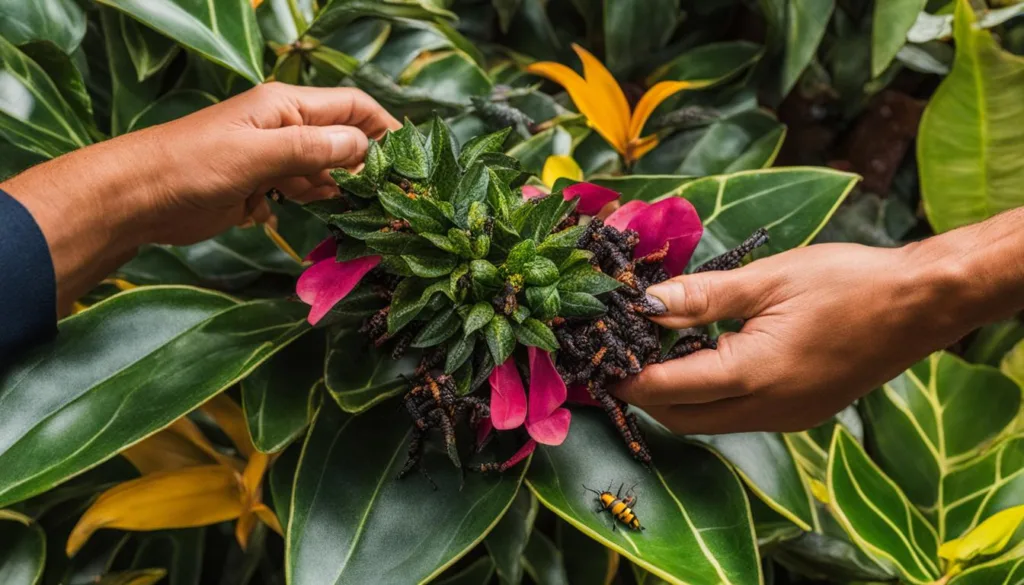
As a seasoned indoor gardener and Croton Petra aficionado, I’m always on alert for the sneaky pests that adore making these rainbow-hued plants their home. In my experience, the most common culprits are mealybugs and spider mites.
These tiny pests can cause a lot of stress for your Croton Petra, often hiding underneath the colorful foliage and sucking the sap from the stems and leaves.
But fear not! Dealing with these little invaders doesn’t have to be a nightmare. I have found that incorporating neem oil into my routine plant care is a game-changer.
This powerful, natural pesticide helps in pest prevention and eradication, ensuring my excitingly vibrant Croton Petra continues to brighten my home without the threat of uninvited guests.
Effective Measures Against Mealybugs and Spider Mites
Mealybugs look like small cottony clumps hiding in leaf axils or on the underside of leaves, while spider mites are so tiny they often only reveal their presence by the fine, silvery webbing they create.
At the first sign of infestation, it’s imperative to act swiftly. Here are the steps I take to protect my Croton Petra:
- Isolation: First and foremost, I isolate the affected Croton Petra to prevent spreading the pests to my healthy plants.
- Manual Removal: Using a cotton swab dipped in rubbing alcohol, I carefully remove any visible pests. This method is particularly effective for mealybugs due to their size.
- Neem Oil Treatment: I spray a diluted solution of neem oil onto the foliage and stem, covering all surfaces thoroughly. Neem oil interferes with the life cycle of the pests, preventing further damage.
For continued pest prevention, I incorporate regular neem oil treatments into my plant care regimen, applying it once every couple of weeks or as needed.
Creating a Defensive Strategy Against Pests
Beyond reactionary measures, the goal is to create an environment that naturally deters these pests. This involves maintaining good air circulation, proper watering, and regular checks. Healthier plants are less likely to come under attack. Here’s a simple chart that outlines my preventative approach:
| Preventative Action | Benefit | Frequency |
|---|---|---|
| Neem Oil Sprays | Natural deterrent for pests | Bi-weekly or monthly |
| Regular Inspections | Early detection of pests | Weekly |
| Good Airflow | Reduces pest-friendly environments | Continuous |
| Proper Watering | Promotes plant health and resilience | As necessary, following dry soil method |
In summary, monitoring your Croton Petra for insect activity and employing natural solutions like neem oil will enhance your plant’s defenses. Remember, vigilance is key when it comes to keeping your Croton Petra free of mealybugs and spider mites. With these strategies, your stunning Croton Petra will continue to revel in its full glory, unfazed by these common pests.
Repotting Strategies for a Healthy Croton Petra
As a devoted gardener and Croton Petra enthusiast, I’ve learned that repotting is a critical aspect of maintaining a healthy root system. It breathes new life into your plants and is essential for their continued growth and vigor.
Ideally, I find repotting in early spring allows for ample time for the plant to establish itself before the growth spurt summer brings. It’s a transformative process that can dramatically impact the plant’s health, showcasing the wonder of nature’s resilience and adaptability.
Selecting the Right Pot and Soil Mixture
In my experience, the tell-tale sign it’s time for Croton Petra repotting is when I see roots peeking through the drainage holes. That’s my cue to prep for the transition. It’s essential to select a well-drained container that’s about 2 inches wider than the current one, to offer just enough space for growth without overwhelming the roots. Overly large pots can lead to water retention issues, which the Croton Petra does not take kindly to.
When it comes to the soil mixture, well-draining soil is my go-to because it prevents waterlogging—a common pitfall that can spell disaster for these tropical beauties.
A mix that includes peat, pine bark, and coarse sand or perlite tends to provide the perfect airy and loose structure that a Croton Petra’s roots need to thrive. Here’s a table that illustrates my preferred soil mix composition:
| Soil Component | Function | Benefit to Croton Petra |
|---|---|---|
| Peat Moss | Retains moisture | Keeps soil moist without waterlogging |
| Pine Bark | Improves aeration | Encourages a robust root system |
| Coarse Sand or Perlite | Increases drainage | Prevents root rot by allowing excess water to escape |
Proper repotting can rejuvenate your plant and propel it into its next growth phase. By using this approach with my Croton Petra, I’ve noticed they are happier, showcase more vivid colors, and maintain that desirable lush look year-round.
So when it’s time for a change, grab your potting gloves, arm yourself with knowledge, and get ready for an enriching experience—for both you and your Croton Petra.
Curating a Stunning Croton Petra Display with Companion Plants
Creating a striking display in your home involves more than just placing a beautiful plant in the corner; it’s about designing a rich tapestry of foliage that complements and enhances each other.
In my journey with indoor gardening, I’ve found that the vivid hues of the Croton Petra not only stand alone in their splendor but also serve as the perfect anchor for a group of companion plants.
Adding botanical partners like the Flamingo Flower and selections from the Kalanchoe Collection not only augments the visual appeal but creates a cohesive ecosystem that thrives with shared care requirements.
The Croton Petra itself is a scene-stealer, with its leaves seemingly dipped in every color of the rainbow. However, when placed alongside the rosy brilliance of the Flamingo Flower, the ensemble’s warmth intensifies, setting the stage for an exquisite Croton Petra display within your home.
Including the effervescent blooms of the Kalanchoe Collection introduces another layer of textural contrast, playful forms, and a kaleidoscope of colors that further celebrate nature’s palette.
As both the Flamingo Flower and Kalanchoe vegetation thrive in bright, indirect light alongside their flamboyant Croton counterparts, their care synchronizes harmoniously, simplifying maintenance and enhancing the overall aesthetic.
My personal spaces bloom with life as these companion plants do not merely coexist but seem to dance together in a visual symphony, each enhancing the splendor of the other.
The combined Croton Petra display shows that in diversity there is beauty and strength—each plant’s unique attributes combine to create an even more impactful visual statement.
This orchestration of Croton Petra alongside its companion plants results not just in a display of individual beauty, but in a chorus of botanical vibrance that celebrates the art of indoor gardening.
FAQ
How do I ensure my Croton Petra displays vibrant foliage?
To encourage vibrant foliage, provide your Croton Petra with bright, indirect light for 4-6 hours a day, keep the soil evenly moist without waterlogging, maintain high humidity, and fertilize monthly during the growing season. Also, protect it from extreme temperatures and prune it to promote bushier growth.
What are the ideal lighting conditions for Croton Petra?
Croton Petra thrives under bright indirect sunlight. The ideal spot is near an east, south, or west-facing window where it can soak up 4-6 hours of filtered sunlight without being exposed to harsh direct rays in the afternoon.
How often should I water my Croton Petra?
Check the top 1-2 inches of soil for dryness and water when it feels dry. The frequency depends on environmental conditions but generally watering once a week is adequate. Ensure proper drainage and reduce watering in winter.
How do I increase humidity for my Croton Petra?
Increase humidity by misting the leaves, placing a humidifier nearby, or setting the pot on a tray filled with pebbles and water. These methods mimic the plant’s native tropical environment and can prevent issues related to low humidity.
What temperature is best for my Croton Petra?
Croton Petra prefers temperatures between 60°F-80°F. Keep it away from drafts and abrupt temperature changes to avoid stress and possible damage to the plant.
When and how should I fertilize my Croton Petra?
Fertilize your Croton Petra once a month during the active growth seasons of spring and summer. Use an organic fertilizer meant for houseplants, and avoid fertilizing in fall and winter when growth naturally slows.
What’s the proper way to prune a Croton Petra?
Prune your Croton Petra to maintain its shape and encourage a fuller appearance by cutting back long, leggy stems. Do so during the growing season for the best results.
Can I propagate my Croton Petra, and if so, how?
Yes, propagate Croton Petra by taking stem cuttings about 3-4 inches long, dip them in rooting hormone if desired, and then place them in water or moist soil. Keep the humidity high to encourage rooting.
How do I deal with pests on my Croton Petra?
If you notice pests like mealybugs or spider mites, isolate the plant and treat it with neem oil or horticultural oil. Regular inspections and maintaining a healthy plant can help prevent infestations.
When should I repot my Croton Petra and what soil should I use?
Repot your Croton Petra when the roots start to emerge from the drainage holes, usually in early spring. Use a well-draining soil mixture and choose a pot that’s slightly larger than the current one for best results.
What are some good companion plants for Croton Petra?
Companion plants that thrive in similar conditions include the Flamingo Flower and Kalanchoe varieties. These plants can share the same light and watering regime and create a diverse and visually appealing arrangement.

